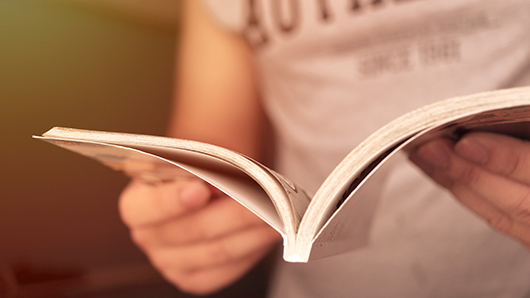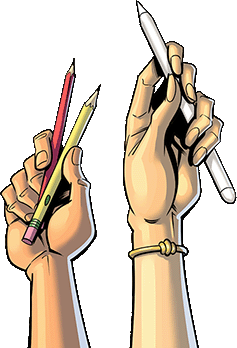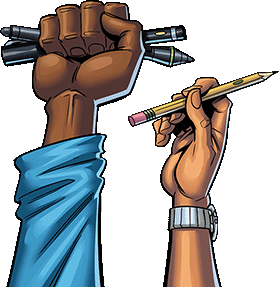Top Requirements for the Perfect Comic Book Printing
October 1, 2021
Creating a comic book or graphic novel is an exciting and creative process. Since comic book sales reached $1.28 billion in 2020, showing how popular comics have become, it's easy to get excited about releasing a comic book.
If you’re a first-time comic book creator, then you’ve probably never had your work printed professionally before. Consider how you plan to print the finished product before you get too far into your book project. You can ensure your comic book is high quality by considering all the necessary printing requirements before you get started.
Publishing Goals
Designing your comic artwork requires you to know who the reader is and what market you are targeting. The style of illustration you select and how much text appears on each story panel will vary drastically when you’re appealing to children vs. adults.
Figure out what you want to achieve with the final printed product before you begin designing your comic.
Dimensions
Understanding the dimensions of a standard comic book can guide you in creating your artwork. Traditionally, a finished trimmed sheet of paper in a comic book measures 6.625” x 10.25”. Magazine size is usually 8” x 10.5”. Graphic novels are typically 5.5” x 8.5”. There is also the Manga size standard of 5.5” x 7.75”.
If you believe your comic book may not fit these typical printing standards, you can request a custom size from a professional printing service. They can go over what you need to do for your comic book to be successfully printed and give you advice on the image resolution and dimensions.
Image Resolution
The suggested image resolution for printing is 300 DPI (dots per inch). Your artwork will not print correctly if the DPI is too low; it will appear hazy or pixelated. Keep the resolution to 400 DPI or less, as higher resolutions will not improve the image quality, but they do slow down production.
File Type
You can save your drafted artwork as a PDF file, TIF, or JPEG when it’s ready for printing. Some professional printing firms may prefer to receive a consolidated PDF file that contains all your comic book pages, including the front and back cover.
An off-set professional printing business can work on printing your comic with uploads of single pages.
Binding Style
Comics are usually bound as saddle stitched books because of their low page count. This design features folded sheets stapled together by wire staples. The staples are driven through the crease of the spine to form a traditional book layout from the pages.
It’s a simple design, and with just a few steps, you will have a professional-looking comic book. Saddle stitching also works well when you have crossover images or images that span two pages.
Another printing option is using perfect-binding for your comic. Since graphic novels have more pages than comic books, they are often printed using the perfect binding process to accommodate the larger page counts. Perfect-bound (also called square bound) books are glued at the spine with a flexible glue. The other three sides of the book are then trimmed to achieve crisp edges.

Interior Pages
Comic books and graphic novels use various types of paper for their covers and internal pages. When choosing between glossy or uncoated paper, consider the paper quality.
Whether you have full color or black and white artwork, you want your art to be seen in the best light with the right paper quality. Gloss-coated paper is brighter, while uncoated pages are an economical option for most comic books.
The paper’s weight and thickness are also crucial factors to consider. If you want to print comic books on standard paper, 80 pounds is a good choice.
Page Count
The page count of most comic books is a multiple of four. According to the size of your book, the printer creates a parent sheet that can hold 8, 16, or 32 pages. The printer cuts and staples them together to create your book.
A saddle stitched book should have a maximum of 64 interior pages because they need to be secured using staples. A perfect-bound book needs a specific thickness (usually a minimum of 0.125”) to form a spine, so you’ll need to consider how many pages your comic will be if you want to select this binding option.
If you select thicker paper for your book project, you may be able to opt for perfect binding with a shorter story.
The minimum number of pages required by most offset printing services is 8 pages, and the maximum number is 92 pages. An 8-page comic should have 5 to 6 pages of work, and a 32-page comic should have approximately 28 to 30 pages. A professional printing firm can help you decide the best page count for your project.
Quantity
It’s always a good idea to consider what quantity is right for your publishing goals, even if the unit cost decreases with increased order quantity. Low unit costs may help you save money, but not if you need to order more books.
An offset printing service can print and distribute your books at a fraction of the cost. You can use it if you need large quantities for comic conventions. Using an offset printing service can help you print more comic books for you to distribute widely.
We Can Turn Your Book Project into a Comic Book
Comix Well Spring makes it possible to publish your comic book project. We provide affordable printing options for your comic book project with our skilled and friendly customer service team members.
You can also create marketing products like banners, business cards, and bookmarks through our printing services to promote your latest release.


